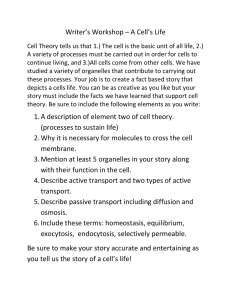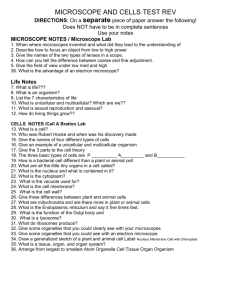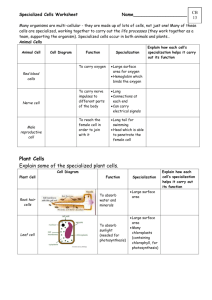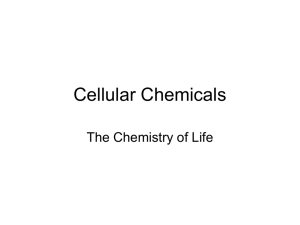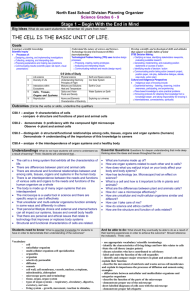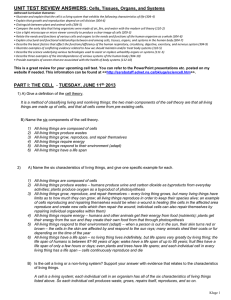1.6 Parts of a Cell Seen with an Electron
advertisement
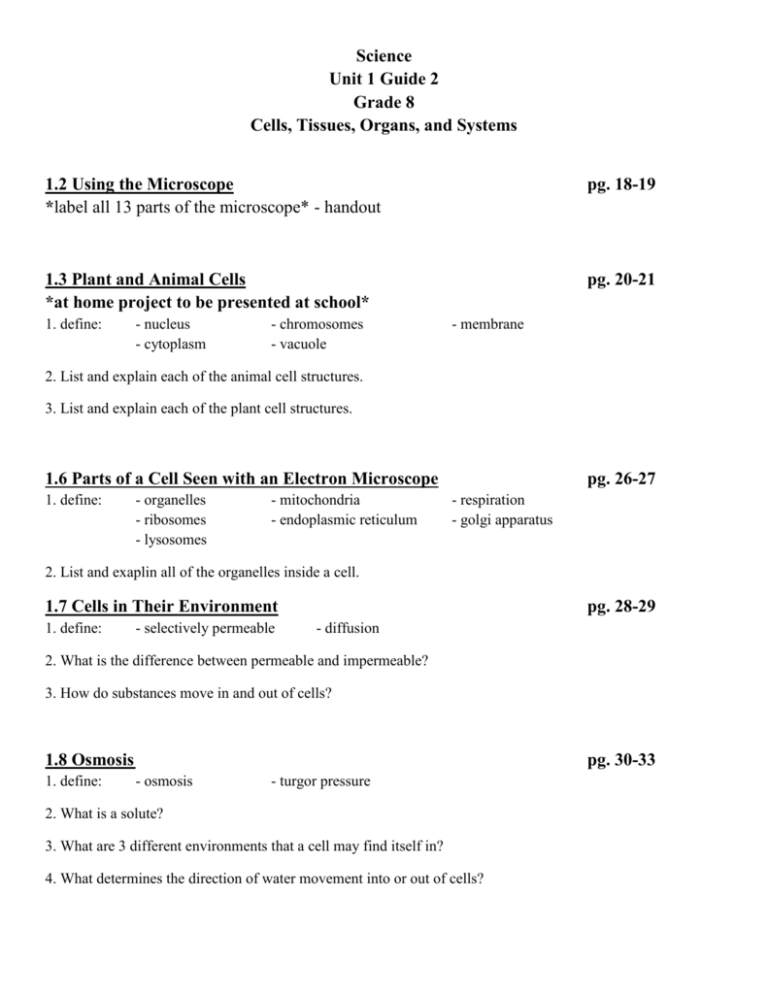
Science Unit 1 Guide 2 Grade 8 Cells, Tissues, Organs, and Systems 1.2 Using the Microscope *label all 13 parts of the microscope* - handout pg. 18-19 1.3 Plant and Animal Cells *at home project to be presented at school* pg. 20-21 1. define: - nucleus - cytoplasm - chromosomes - vacuole - membrane 2. List and explain each of the animal cell structures. 3. List and explain each of the plant cell structures. 1.6 Parts of a Cell Seen with an Electron Microscope 1. define: - organelles - ribosomes - lysosomes - mitochondria - endoplasmic reticulum pg. 26-27 - respiration - golgi apparatus 2. List and exaplin all of the organelles inside a cell. 1.7 Cells in Their Environment 1. define: - selectively permeable pg. 28-29 - diffusion 2. What is the difference between permeable and impermeable? 3. How do substances move in and out of cells? 1.8 Osmosis 1. define: pg. 30-33 - osmosis - turgor pressure 2. What is a solute? 3. What are 3 different environments that a cell may find itself in? 4. What determines the direction of water movement into or out of cells? 1.12 Cells and Cell Systems 1. define: - tissue pg. 40-41 - organs - organ systems 2. Organize the following structures from smallest to largest, and give an example of each: -organ system - tissue - cell - organ - molecule 3. Select 1 of the human organ systems and construct a concept map. Arrange the structures in your concept map from smallest to largest. 1.13 Unicellular Organisms 1. define" - microorganisms pg. 42-45 - bacteria - protists 2. What are 3 types of microorganisms? 3. Compare euglena to a plant cell. Make a list of similarities and differences. 1.14 The Need for Cell Division pg. 46-47 1. Which size of cell is most efficient at transporting messages from its surroundings to its nucleus; small or large? Explain. 2. Which size of cell would be most efficient at transporting nutrients in and waste materials out; big or small? 3. Explain why highly active cells, such as muscle cells, tend to be small. 1.15 Cell Specialization pg. 48-49 1. define: cell specialization 2. What are the advantages of cell specialization for an organism? 3. Name 6 specialized cells found in human bodies and 1 of their functions. Specialized Cell Function Dear Parent/Guardian This is to notify you that there is a test on Unit 1 Guide 2 on _____________________________2012, by signing this sheet and returning it before the test, your child will earn an extra point on their test score. Your child's mark on their last test was /28. ____________________________ Parent/Guardian Signature
